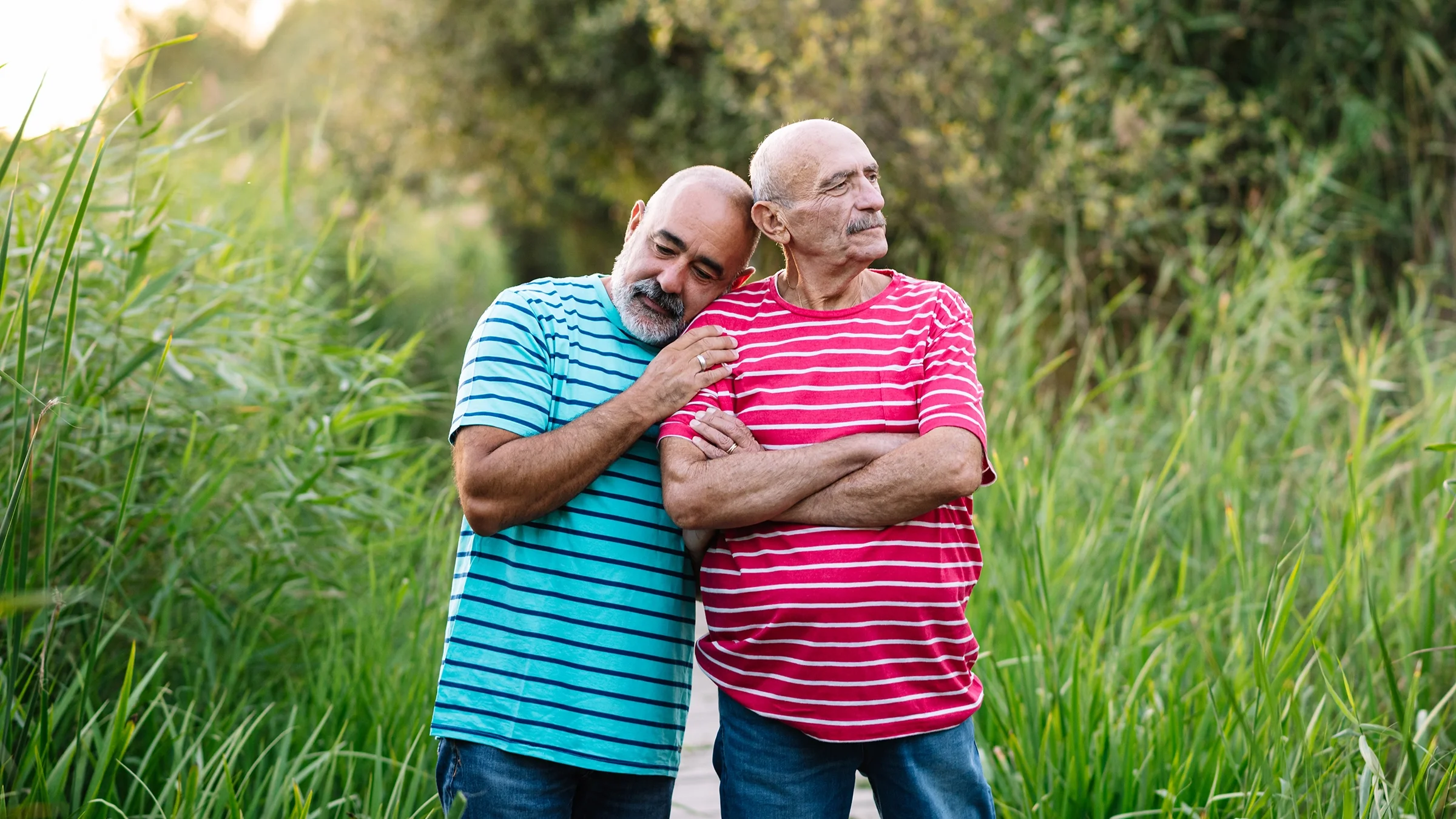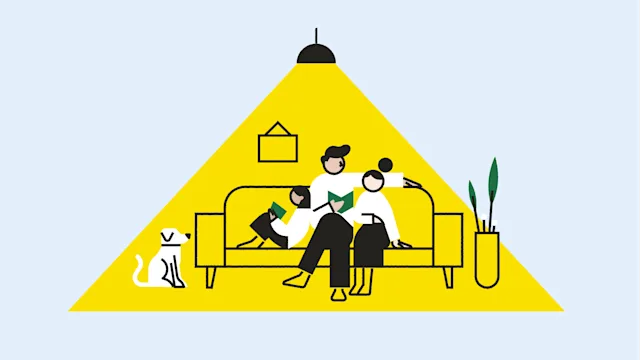Key takeaways:
Partners in healthy relationships show certain signs that set them apart from those in less healthy ones.
Signs of a healthy relationship include open communication, respect, honesty, and kindness.
To improve a relationship, both partners can make an effort to change their behaviors and consider getting help from a therapist.
A relationship is defined as a connection between two people who share a common bond. Relationships can be between romantic partners, family members, or friends. But for the purposes of this article, we will focus on romantic relationships.
Romantic relationships can be healthy, unhealthy, or somewhere in the middle. Healthy relationships are those between partners who respect and trust each other. These relationships contain boundaries that both parties honor. And as a result, both people in the relationship feel secure, comfortable, and understood.
There are certain signs that distinguish a healthy relationship from a less healthy one. Read on to learn about thirteen signs of a healthy relationship.
1. You communicate openly and honestly
Healthy couples communicate openly and honestly. They practice effective communication skills like:
Active listening
Taking turns speaking
Providing negative feedback in a gentle and respectful manner
Speaking truthfully
They also work through their arguments, rather than sweep them under the rug. Healthy couples know that communication is the foundation of a good relationship.
2. There is mutual respect
People in healthy relationships respect their partners and convey love and acceptance for them. They may disagree with their partners on certain topics or issues. But they are considerate about these differences, rather than trying to change the other person.
3. You have ‘healthy conflict’
Conflict is often perceived as something bad that should be avoided. But the truth is that conflict is a normal part of any relationship. What sets healthy couples apart is that they work through their conflict with love and respect for their partners.
In unhealthy relationships, couples may respond to conflict with:
Explosions of anger
Blaming
Name-calling
Shutting down
Avoidance
Read more like this
Explore these related articles, suggested for readers like you.
Healthy couples take a different approach. They respond to conflict by:
Thinking before reacting
Listening to their partner’s side
Trying to understand their partner’s point of view
Making an effort to compromise
4. You trust each other
Having trust in a relationship creates security. People in trustworthy relationships have faith that their partners will be loyal.
But trust takes time to build and requires ongoing work. To help build trust in a relationship you can:
Keep your word
Communicate your intentions
Admit when you are wrong
Be honest
Sometimes, trust is broken in relationships. Infidelity, or cheating, that violates the boundaries of a relationship is one way that trust can be broken. When one or both partners cheat in a closed relationship that has agreed upon monogamy, it violates the rules of that relationship. Rebuilding trust after it’s been broken because of infidelity is challenging. But couples therapy, which we discuss more below, can sometimes help.
5. Boundaries are respected
Boundaries are personal limits that you set to protect yourself in different areas of your life. They can be put in place to protect your physical space, your emotions, and even your finances. Like communication, boundaries are also foundational to a healthy relationship.
Examples of setting health boundaries are:
Not being physically intimate until you feel ready
Keeping the password to your phone private
Taking several minutes to cool off after an argument
Everyone’s boundaries look different. And, sometimes, boundaries get crossed. In healthy relationships, couples honor their partner’s boundaries. And if boundaries do get crossed, the partner who overstepped owns up to it and makes an effort to change in the future.
6. You are interdependent rather than codependent
Codependency refers to being overly dependent on another person. It is an unhelpful pattern that is common in relationships involving addiction, abuse, and severe mental illness. Codependent people are usually extreme caretakers who put others’ needs before their own.
Interdependence involves having a close bond with your partner, while also maintaining a sense of yourself. Partners in interdependent relationships mutually depend on each other, but can also stand on their own. Healthy relationships are marked by interdependence, rather than codependence.
7. You can both take responsibility
Everyone makes mistakes from time to time; it’s part of being human. What matters most is taking responsibility for your actions when you have said or done something that hurts another person. This helps the person feel heard, which is necessary to be able to move on from conflict.
In a relationship, taking responsibility can be difficult because it requires you to put your pride aside. (This can be especially hard if you grew up in a family that never said “I’m sorry.”) But it’s important to mean it when you apologize. It’s also important that you commit to changing your behavior in the future. Saying that you’re sorry does not mean much if you keep repeating the same mistakes.
8. You treat each other with kindness
Kindness is an essential part of a healthy relationship. Psychologist and relationship expert John Gottman identified four behaviors that predict the likelihood of a relationship ending. And he referred to these behaviors as the “Four Horsemen of the Apocalypse”:
Stonewalling
Criticism
Defensiveness
Contempt
The last one, contempt, is the opposite of kindness. In Gottman’s model, contempt refers to treating your partner with disrespect. This may involve eye-rolling, extreme sarcasm, and name-calling. Of all the horsemen, contempt is the strongest predictor of divorce, according to Gottman.
Kindness, on the other hand, involves showing:
Concern
Appreciation
Compassion
Giving
Understanding
People in healthy relationships are kind to their partners and practice very little stonewalling, defensiveness, criticism, and contempt.
9. You can have difficult conversations
Relationships are tough work. Healthy couples understand that sometimes you have to talk about difficult topics. Avoiding these subjects can cause issues to fester. But directly confronting them allows you to proactively address things before they become a problem.
10. You are confident your partner likes you
When you are in a healthy relationship, you feel secure. You don’t find yourself questioning whether your partner wants to be with you. You and your partner do things to show that you value each other.
Keep in mind that sometimes a mental health issue, like obsessive-compulsive disorder (OCD), can lead someone to question whether their partner likes them or not. If you have relationship OCD, it may help to work with a therapist to find ways to cope with your doubts. Often, these kinds of doubts are unfounded.
11. You honor your partner’s ‘love language’
Author and counselor Dr. Gary Chapman developed the concept of love languages. From his work as a marriage counselor, he learned that people give and receive love in different ways. He identified five different ways that people do this:
Words of affirmation
Gifts
Quality time
Acts of service
Physical touch
Healthy couples cater to their partner’s specific love language, even if it’s different from their own. This helps partners feel appreciated in a relationship.
12. You do not want to change your partner
Partners in healthy relationships accept each other as they are; they do not desire to change each other. There may be aspects of each other that they would prefer to be different. But they don’t seek to change these things unless it’s in support of their partner’s desire to change.
Partners in healthy relationships understand that no one is perfect, and they respect the other person for who they are.
13. You enjoy each other’s company
Relationships allow us to share our lives with another person. So it’s key that you enjoy your partner’s company.
Everyday may not be exciting. But, generally, healthy couples are happy to be with each other. Having shared hobbies and interests helps with this, since it gives partners the chance to share experiences they enjoy.
What does it mean if your relationship lacks these signs?
If you don’t see the above signs in your relationship, then it may mean that it’s not as healthy as it could be. It could also mean that there are aspects of your relationship that may need to be addressed.
Signs of an unhealthy relationship include:
Extreme codependency
Lying or stealing
Spying
Attempts to exert control
Threats of physical injury if the relationship is ended
A lack of respect
Name-calling or put-downs
A disregard for boundaries
Walking on eggshells
Use of intimidation or manipulation
Stalking
Emotional or verbal abuse
Physical violence
Sexual abuse
This list is not exhaustive. If you’re not feeling right about your relationship, even if none of the above signs fit, you may be in an unhealthy relationship.
How can you work toward a healthy relationship?
Relationships are a two-way street. Both partners need to put in work to form and maintain a healthy relationship. This work should be done both as a couple and on your own.
To work toward having a healthier relationship, you can:
Identify your personal boundaries and express them to your partner
Learn and practice healthy communication skills, like active listening
Identify you and your partner’s love languages
Take responsibility when you make a mistake
Remain honest
If you and your partner are having trouble improving your relationship, couples therapy may be helpful. In couples therapy, partners meet together with a therapist and discuss their experiences in the relationship.
There are many different approaches to couples therapy. But some common treatment goals are:
Improving communication
Being able to resolve disagreements more effectively
Developing a secure attachment
Repairing hurts from the past
To locate a couples therapist, you can:
Conduct an online search
Ask family members or friends for recommendations
Search the American Association for Marriage and Family Therapy’s online directory
The bottom line
Relationships, even healthy ones, require ongoing work. You can benefit from continuously evaluating the health of your relationship and reflecting on what changes you can make to improve it. If you and your partner find it difficult to make changes on your own, a couples therapist may be able to help.

Why trust our experts?



References
5 Love Languages. (n.d.). What type of relationship would you like to strengthen?
American Association for Marriage and Family Therapy. (n.d.). Find a therapist.
British Heart Foundation. (n.d.). 10 tips for active listening.
Canadian Agency for Drugs and Technologies in Health. (2014). Summary of included couples therapy interventions. Couples Therapy for Adults Experiencing Relationship Distress: A Review of the Clinical Evidence and Guidelines.
Carter, B. (n.d.). 4 tips to build everyday trust in relationships. The Gottman Institute.
Fryburg, D. A. (2021). Kindness as a stress reduction–health promotion intervention: A review of the psychobiology of caring. American Journal of Lifestyle Medicine.
Hendrick, S. S., et al. (2006). Measuring respect in close relationships. Journal of Social and Personal Relationships.
Lisitsa, E. (n.d.). The four horseman: Criticism, contempt, defensiveness, and stonewalling. The Gottman Institute.
Mass.gov. (n.d.). Recognizing the signs of unhealthy relationships. Commonwealth of Massachusetts.
Mental Health America. (n.d.). Co-dependency.
Mostova, O., et al. (2022). I love the way you love me: Responding to partner’s love language preferences boosts satisfaction in romantic heterosexual couples. PLOS One.
NY.gov. (n.d.). What does a healthy relationship look like? New York State Government
Rokach, A., et al. (2023). Love and infidelity: Causes and consequences. International Journal of Environmental Research and Public Health.
Sels, L., et al. (2019). The occurrence and correlates of emotional interdependence in romantic relationships. Journal of Personality and Social Psychology.
University of Washington. (n.d.). Healthy ways to handle conflict.


















